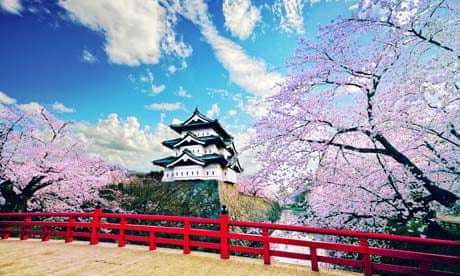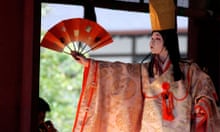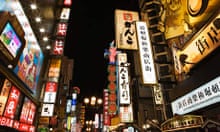It's a little over six months since an earthquake and tsunami destroyed much of Japan's north-east coast; rebuilding has yet to begin and the nuclear crisis is far from resolved. Yet, after taking a huge hit, tourism in Japan is starting to bounce back. This may strike some as premature, unseemly even, but readers of the Guardian and the Observer apparently think not: they named Japan their favourite long-haul country and Tokyo their favourite overseas city in our travel awards this year.
The voting period – from the end of February to the end of April – began before the earthquake and tsunami hit on 11 March, so it is impossible to say how many voted beforehand, and how many wanted to show their support by voting afterwards. Either way, it is clear that our readers love Japan.
Those of us who live here get positive reviews from visiting family and friends of what a holiday in Japan offers: a juxtaposition of old and new, a food culture that goes far beyond Michelin stars, consistently high standards of service, unrivalled public transport, and a mixture of convention and unorthodoxy that lends an other-worldliness to a country that in many ways is an exemplar of modernity.
Whether they spend time soaking in spring water in a mountain retreat, or people-watching in Tokyo's trendy Harajuku and Shibuya districts, all go home claiming to have had the ultimate Japan experience. Japan's impressive showing in this year's travel awards is public recognition of what countless travellers already knew.
"Japan needs international tourists to return, not only for those who depend on tourism for their livelihoods, but even more importantly to help bring a sense of normality back to Japan," says Kylie Clark, head of PR and marketing for the Japan National Tourism Organisation (JNTO). "The people of Japan want to thank the world for the tremendous support and goodwill given to them following the earthquake and tsunami. The country and its people are ready and waiting to welcome visitors more than ever, so we were extremely happy to hear the results, with readers giving Japan a whopping 98.9% satisfaction score and Tokyo 98.2%. We hope this will help assure people that Japan is a fantastic destination for a holiday."
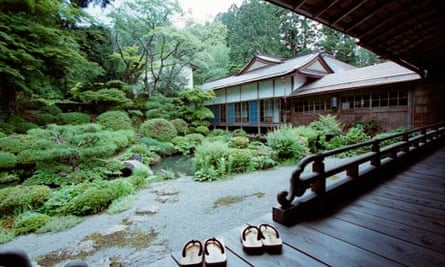
There has been criticism in the past that tourist authorities have done too little to court foreign visitors; now they can't do enough. This year and next is the ideal time for those with the Japan bug – whether it be an interest in traditional culture and temples, skiing the deepest powder in Hokkaido, relaxing on a beach in Okinawa or getting lost in the backstreets of Tokyo – to prove that the country hasn't been forgotten by the rest of the world.
"Many parts of Japan, including popular destinations such as Hokkaido, Osaka, Kyoto, Hiroshima, Mount Fuji, Nagasaki and Okinawa, were outside the area affected by the disaster and saw no disruption to infrastructure. Everything in these areas has continuously operated as normal. In the initial days after the earthquake Tokyoites did suffer some inconveniences – such as beer and yogurt shortages, because packaging for these items was produced in the tsunami-hit area – but the capital is more than 230km from the earthquake zone and was soon back to normal."
Yet there is no point pretending the disaster hasn't deterred foreign travellers: negative coverage seeped into their perception of the country, and in many cases led them to conclude that a visit to Japan carries too many risks, real or imagined.
Japan's tourist industry has suffered massively over the past seven months. In April, the height of the beautiful cherry blossom season, international visitor numbers were down 63% on 2010. Numbers are now picking up, but in August were still down 32%.
Within Europe, Britain is heading the return to Japan. Visitors from the UK were down 57% in April, but by August the gap had lessened to a 27% drop on 2010.
Officials concede that the continuing nuclear crisis at Fukushima, 240km north of Tokyo, is the main reason for the shortfall. But this is being countered by progress at the plant, official reassurances that areas outside the exclusion zone are safe, and public support from the likes of Lady Gaga, a recent visitor. The JNTO says governments the world over have relaxed their travel warnings for Japan, and that government and private sector are checking all food safety separately, so there is no need to worry about food and drink.
The cities and areas that usually feature on a tourist itinerary emerged from the disaster physically unscathed. The Kansai region – which includes Kyoto, Nara, Osaka and Kobe – is hundreds of miles from the quake's epicentre. The damage there has been in the form of hotel cancellations by travellers who haven't done their radiation homework.
Those who have decided to stay away are missing out. Kyoto, the ancient capital, will soon be ablaze with the autumn colours in a time of clear skies, crisp air and harvest festivals; and with winter not far off, skiers and snowboarders are dusting off their gear in anticipation of some of the best snow in the world.
Tokyo, the base for most visitors to Japan, suffered limited earthquake damage, but contamination from Fukushima did briefly find its way into the water supply, and the 35m people living in the metropolitan area have become accustomed to occasional, though harmless, aftershocks. The organised chaos of Tokyo today is proof that the "ghost town" label applied in the spring is now woefully misplaced.
Its eclectic attractions are as tempting as ever: a sushi breakfast at Tsukiji market, a stroll around old Asakusa and an afternoon shopping in Harajuku, for example; then dinner in an izakaya in Shinjuku and drinks in the Golden Gai area, perhaps with a panoramic view of the neon-lit city from one of the area's lofty bars.
The power-saving measures that forced businesses to dim their lights and transport companies to operate limited services have ended. The supply line disruptions and panic buying that cleared supermarket shelves of bottled water and some foods was mercifully short lived.
As long as the situation at the Fukushima plant remains unresolved, the advice is to avoid the area, other than to travel through it by train or car on the way to destinations in the north of Tohoku. The trip will be worth both the effort and any short-lived anxiety, as the bullet train makes a brief stop in Fukushima city, 60km from the plant.
Some travellers – a minority – do head to the Tohoku coast to gawp at the mess the tsunami left. Taking holiday snaps of ruined neighbourhoods where people's homes once stood is unlikely to earn you many friends, let alone invaluable insider tips on where to eat, sleep and sightsee. But those who insist on travelling to Tohoku should not find it too difficult to get involved in one of the many small volunteer projects along the coast (see overleaf).
In Tohoku itself, there are signs of a recovery in tourism, even in the hardest-hit areas. The islands of Matsushima, protected from the full force of the tsunami by dozens of rocky islets, are keen to encourage visitors, and have the infrastructure to make the journey from Tokyo worthwhile.
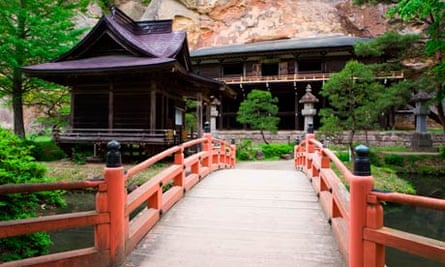
This summer, Unesco named Hiraizumi, a 900-year-old town in Iwate prefecture more than 50km inland from the ruined coast, as a world heritage site, a decision officials hope will help the region regain confidence. The expected influx of visitors will be able to tour ancient temples and gardens around the sprawling hilltop complex.
The yen's historic highs may have made a holiday in Japan expensive, but discounted rates at luxury hotels and inns can make up for some of that.
The events of 11 March have given the risk of natural disasters a darker edge: aftershocks regularly rattle the Tohoku region, and strong shakes have been felt further south. But an unscientific reading suggests their frequency and intensity are falling, and none has yet caused much damage. Earthquakes are a fact of life in Japan. They were once just a slightly troublesome intrusion that travellers were prepared to risk, and there is no reason why current seismological shifts should be any different.
Visitors arriving at Narita airport in the coming months will find a country still coming to terms with the worst disaster in its postwar history, but also doing what it does best – getting on with things.
"Japan is very appreciative of the warm words and actions we have received from around the world," says Mamoru Kobori of JNTO's marketing and promotion department. "Now, visitors to Japan will be given a warmer welcome than ever before."
